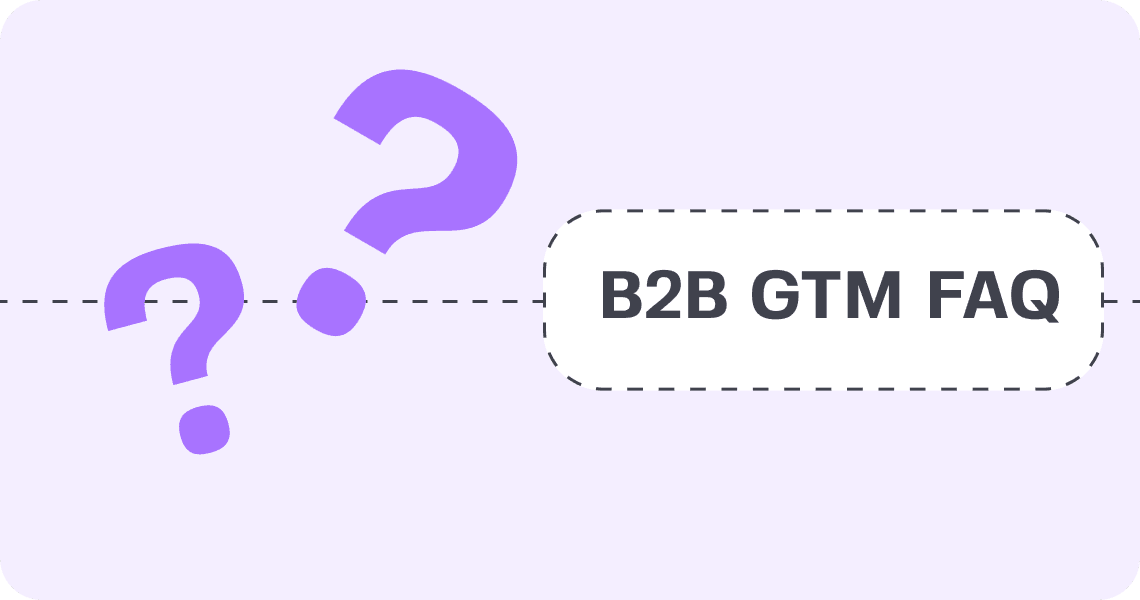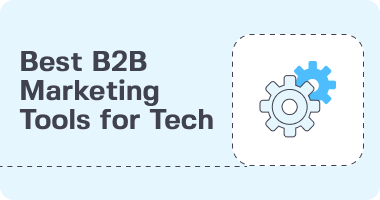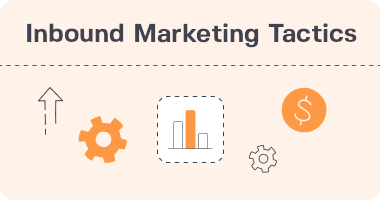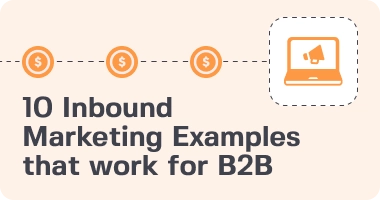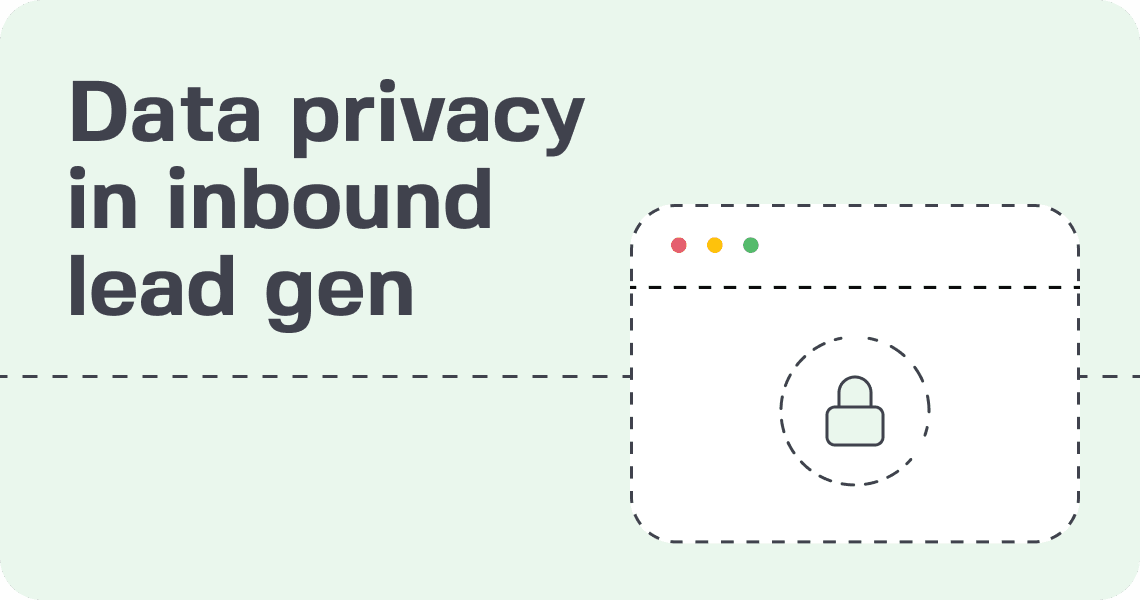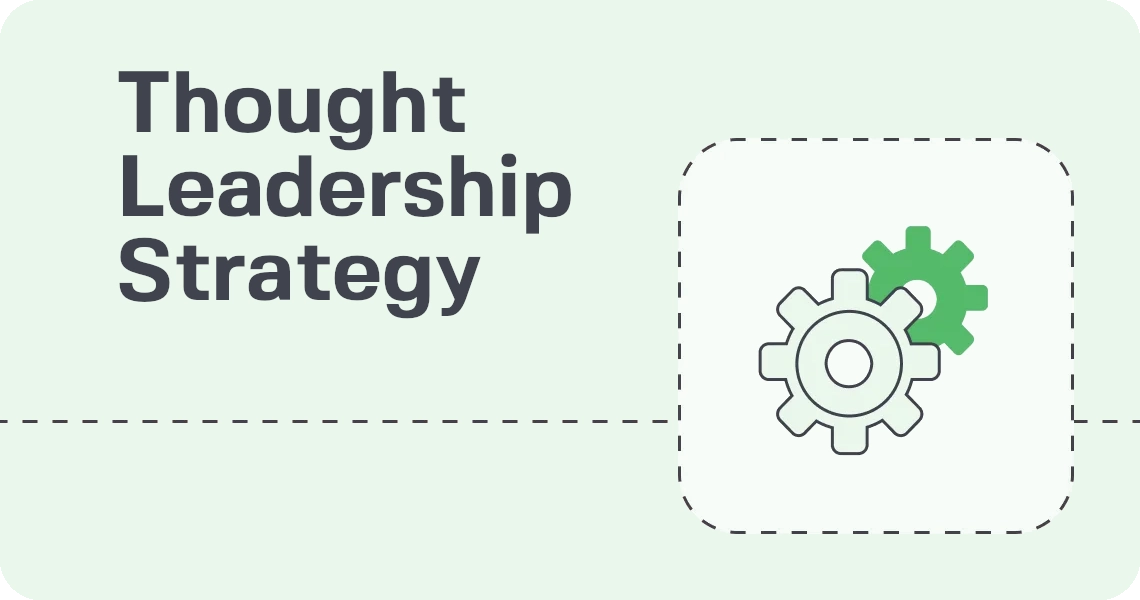Research shows that 82% of B2B buyers engage with at least five pieces of content before talking to a sales rep. This shift in buyer behavior shows exactly why inbound marketing has become such a dominant force. Instead of chasing prospects, businesses attract them by providing valuable content at the right moment. But does that mean outbound marketing is obsolete? Not at all. When used strategically, inbound and outbound marketing work together to generate leads, build trust, and close deals.
At 42DM, we’ve helped B2B companies refine their marketing by building inbound systems for long-term growth and running outbound campaigns that deliver quick wins. The key is knowing which approach works best in different scenarios.
What is inbound marketing?
Inbound marketing attracts customers by providing valuable, relevant content instead of interrupting them with direct outreach. This approach nurtures prospects through a self-guided journey, helping them discover solutions on their own, build trust with a brand, and make informed purchasing decisions.
Unlike outbound marketing, which pushes messages to a broad audience, inbound marketing pulls in buyers who are already searching for answers, making it a more natural and effective way to generate leads.
Definition
Inbound marketing attracts leads by providing value instead of promoting products directly. It relies on education, engagement, and relationship-building, giving potential buyers the information they need to solve their challenges. By addressing pain points through relevant and helpful content, businesses build trust and credibility, making prospects more likely to choose them when the time is right.
Research shows that 81% of B2B buyers research online before contacting a vendor. They evaluate multiple sources, compare solutions, and gather insights before making a decision. Businesses that provide useful content where buyers are already looking—on blogs, search engines, social media, and email—have a much better chance of being chosen.
How inbound marketing works

Inbound marketing helps potential customers find your business on their own rather than being bombarded by ads or sales pitches. Instead of chasing leads, businesses create useful content that answers real questions, solves problems, and builds trust.
One of the best ways to do this is through content marketing—publishing blog posts, case studies, and reports that give potential buyers the information they’re already searching for. When businesses provide real value, they become a go-to source instead of just another company pushing a product.
To make sure this content reaches the right audience, companies invest in SEO strategies that improve their visibility on search engines. With 68% of online experiences starting with a Google search, showing up in the right place at the right time is critical. Social media plays a similar role, giving brands a way to connect with potential customers through industry discussions, insights, and direct conversations.
Email is another key part of inbound marketing, but not in the way many people think. Instead of sending mass promotional emails, businesses use targeted email sequences that share relevant insights based on what a lead is actually interested in. This helps move potential buyers through the decision-making process without overwhelming them with sales-heavy messaging.
Some companies take things further by hosting webinars, podcasts, or industry events where they can share expertise in a way that feels more personal. Others use live chat and messaging tools to answer questions in real time, making it easier for potential customers to engage. No matter the format, inbound marketing is about being helpful, visible, and trustworthy—so when buyers are ready, they already know where to turn.
What is outbound marketing?
Not every customer actively searches for a solution. Some need to see the right offer at the right time before they realize they have a problem to solve. This is where outbound marketing comes in.
Unlike inbound marketing, which attracts leads over time, outbound marketing goes directly to them. It uses targeted ads, cold outreach, and direct engagement to get in front of decision-makers, whether or not they’re actively searching. The goal isn’t to wait and hope potential customers find you but to put your brand in front of the right people and start conversations that lead to sales.
For B2B companies, outbound marketing is especially powerful for breaking into new markets, landing enterprise clients, and accelerating revenue growth. When executed well, it creates immediate brand visibility and helps businesses reach high-value prospects faster.
Definition
Outbound marketing is about taking action instead of waiting around for potential customers to discover your brand. Instead of relying on organic traffic or word-of-mouth, it proactively puts your message in front of the right audience using highly targeted tactics.
Unlike inbound marketing, which nurtures leads over time, outbound marketing delivers direct, measurable engagement. In industries where personal outreach is critical, like SaaS, enterprise sales, and consulting, it’s often the fastest way to secure high-value deals.

As mentioned, outbound marketing is all about actively putting your brand in front of the right people instead of waiting for them to find you. Businesses control who sees their message, how often they see it, and what action they take. The goal is simple—capture interest quickly and move potential buyers toward a sales conversation.
One of the most common outbound strategies is cold outreach, where businesses send targeted, personalized emails to decision-makers at key companies. Sales teams also use cold calling and direct mail to initiate conversations, especially in industries where personal relationships drive deals.
Paid advertising plays a major role in outbound marketing, with businesses running Google Ads, LinkedIn Ads, and retargeting campaigns to reach a predefined audience. For companies looking to establish credibility and connect with potential clients face-to-face, trade shows and industry events provide a direct line to prospects.
Some businesses take a highly targeted approach with account-based marketing (ABM), where marketing and sales teams collaborate to craft custom messaging for high-value accounts. Others expand their reach through sponsorships and partnerships, placing their brand in front of the right audience by sponsoring industry content, events, and podcasts.
Each of these tactics works toward the same goal: getting in front of the right people, starting conversations, and driving conversions faster than inbound marketing would alone.
Key differences between inbound marketing vs outbound marketing
| Category | Inbound Marketing | Outbound Marketing |
| Approach | Attracts leads through valuable content, social media, and SEO. Builds trust and lets prospects come naturally. | Proactively reaches out to prospects using direct methods like cold calls, paid ads, and direct messaging. |
| Cost Efficiency | Lower cost per lead as it relies on organic methods like SEO and content marketing. Higher long-term ROI. | Higher upfront costs due to paid advertising and outreach efforts. Delivers quick wins but requires ongoing investment. |
| Lead Quality | Generates warm leads who are already interested in solutions. Leads are often more qualified and easier to convert. | Targets cold leads who may not be actively searching for solutions. Requires more nurturing and follow-ups. |
| Measurement | Analytics-driven, focusing on website traffic, content engagement, and lead conversion rates. | Provides immediate, trackable results through metrics like response rates, ad impressions, and cost per lead. |
Both outbound vs inbound marketing are designed to generate leads and drive sales, but they take very different approaches.
Approach
Inbound marketing attracts the right people by offering something valuable, such as content that educates, informs, and solves problems. Instead of pushing a message, it builds trust and lets prospects come to you when they’re ready. Modern buyers prefer to do their own research before speaking with sales, and inbound marketing makes sure your business is there when they start looking.
Outbound marketing, on the other hand, takes a direct, proactive approach. Businesses reach out to potential customers through cold emails, paid ads, and direct messaging to get their brand in front of the right audience. This method works well in industries with long sales cycles, where waiting for inbound leads isn’t an option and early brand visibility is critical.
Cost efficiency
Inbound marketing tends to be more cost-effective because it relies on organic channels like SEO and content marketing. While there’s an upfront investment in content creation, the long-term payoff is significant. Once a blog post, video, or case study is published, it continues attracting leads without additional costs. Studies show that content marketing brings in three times as many leads per dollar as traditional marketing while costing 62% less.
However, inbound marketing takes time to build momentum. Businesses that need immediate results often turn to outbound marketing, which requires ongoing investment in paid ads, event sponsorships, and direct sales outreach. While the cost per lead is higher, outbound marketing delivers faster results and immediate visibility. For companies focused on rapid growth, breaking into new markets, or securing enterprise clients, the ability to reach decision-makers directly makes outbound marketing well worth the investment.
To maximize outbound efforts, businesses need to balance spending with expected returns, ensuring every dollar goes toward the highest-impact activities.
Lead quality
Not all leads are the same. The way a prospect enters your sales funnel shapes how likely they are to convert and how much effort it takes to close the deal.
Inbound marketing attracts warm leads, people who are already searching for solutions and engaging with your content because they see value in it. Since they have taken the first step, they tend to be more qualified, more informed, and more likely to convert over time.
Outbound marketing, on the other hand, targets cold leads, people who may not even realize they need your product yet. Since they have not actively sought out a solution, it takes more effort to build trust, nurture the relationship, and guide them through the sales process. While outbound efforts can get quick responses, turning these leads into paying customers often requires multiple touchpoints and follow-ups.
Measurement
Success in marketing isn’t just about generating leads; it’s about knowing which efforts are working and why. Inbound and outbound marketing use different strategies, so their performance is measured in very different ways.
Inbound marketing focuses on long-term growth, tracking metrics like website traffic, content engagement, and lead conversion rates. Businesses analyze how prospects interact with blog posts, emails, and social media, using these insights to refine their strategy over time. The goal is to build a steady flow of high-quality leads rather than chasing immediate conversions.
With outbound marketing, results come faster and are easier to track. Campaigns like cold outreach and paid ads provide clear performance indicators such as response rates, ad impressions, and cost per lead. Since outbound tactics are designed for quick impact, businesses can rapidly assess ROI and tweak their approach in real time.
Advantages and disadvantages of each approach

Both inbound and outbound marketing have strengths and challenges. Their effectiveness depends on your industry, audience, and business goals. Understanding these trade-offs helps businesses make better marketing decisions and invest in the right strategies.
Advantages of inbound marketing
One of the biggest benefits of inbound marketing is its ability to build long-term credibility. By consistently providing useful content that answers customer questions, businesses position themselves as industry leaders. Over time, prospects will begin to recognize your brand as a go-to resource rather than just another company selling a product.
Inbound also attracts high-quality leads because it reaches people already searching for solutions. Since these prospects engage with your content voluntarily, they tend to be more qualified and more likely to convert compared to leads generated through cold outreach.
Cost efficiency is another big advantage. While inbound marketing requires an upfront investment in content creation and SEO, it doesn’t rely on continuous ad spend to keep generating leads. A well-optimized blog post, video, or whitepaper can continue bringing in traffic for months or even years, making it a sustainable and scalable strategy.
Beyond just generating leads, inbound marketing also strengthens customer relationships. By offering content that educates and engages, businesses create a sense of trust before a purchase decision is made.
Disadvantages of inbound marketing
Now, onto the downsides. One of the biggest challenges with inbound marketing is that it takes time to generate results. Unlike outbound strategies, which can produce leads almost immediately, inbound marketing relies on organic growth. SEO, content marketing, and brand-building efforts often take months before they start driving substantial traffic and conversions.
Another drawback is the constant need for fresh content. Inbound marketing isn’t a one-time effort; it requires businesses to consistently produce valuable content to stay visible. Without a dedicated team or external resources to manage content creation, it can be difficult to maintain momentum.
Competition is also a factor. With so many companies using inbound marketing, getting noticed is harder than ever. A strong SEO strategy and a unique content approach are essential for standing out in a crowded space. Businesses that fail to differentiate themselves may struggle to attract the right audience.
Finally, inbound marketing makes it harder to target specific high-value accounts. Because it attracts leads organically, businesses have less control over who enters the sales funnel. Unlike outbound marketing, which allows companies to focus on specific decision-makers, inbound relies on prospects finding the content on their own. For companies selling to large enterprises or niche markets, this can make lead generation less predictable.
Advantages of outbound marketing
One of the biggest advantages of outbound marketing is speed. Unlike inbound strategies that rely on organic growth, outbound marketing can generate leads almost immediately. Paid ads, cold outreach, and industry events put your brand in front of potential customers without waiting for them to find you.
Outbound is also highly effective for high-ticket B2B sales, especially when selling to enterprise clients. These deals often require personal engagement, multiple touchpoints, and direct conversations with decision-makers. Outbound strategies like account-based marketing (ABM) make it easier to connect with specific prospects, rather than relying on them to discover the brand organically.
Another major benefit is trackability. Since outbound marketing is built around direct response tactics—such as cold emails, calls, and paid advertising—it’s much easier to measure short-term return on investment. Businesses can quickly analyze what’s working and adjust their strategy in real time.
Outbound is also a strong choice for companies entering new markets or launching new products. It creates instant brand awareness, helping businesses reach the right audience before inbound strategies have time to gain traction.
Disadvantages of outbound marketing
While outbound marketing can drive quick results, it often comes at a higher cost per lead. Paid channels like PPC ads, cold outreach, and trade shows require ongoing investment, making outbound more expensive than inbound strategies, which rely on organic traffic.
Another challenge is lower engagement rates. Many outbound tactics, such as cold emails and unsolicited ads, are easy to ignore. If not executed well, they can feel intrusive, leading to low response rates and wasted marketing spend.
Unlike inbound marketing, outbound efforts don’t sustain themselves over time. Once a campaign ends, the lead flow stops. Businesses need to keep investing in outreach and paid media to maintain momentum, whereas inbound content continues attracting leads long after it’s published.
Compliance is another important factor. Data protection regulations like GDPR and CCPA make cold outreach more complex. Businesses must navigate privacy laws carefully to avoid penalties and ensure their outreach remains ethical and compliant.
Outbound marketing also carries a risk to brand perception. If messaging comes across as too aggressive or disruptive, prospects may view the brand negatively. Cold calls, direct ads, and unsolicited emails need to be carefully crafted to avoid damaging trust before a relationship even begins.
Both inbound and outbound marketing play a role in B2B growth strategies, but businesses need to carefully weigh the pros and cons before deciding which approach (or combination) works best for their goals.
How to choose the right strategy for your B2B business

There’s no one-size-fits-all approach to marketing. The right strategy depends on your business model, sales cycle, and how your customers make decisions. Rather than sticking to just inbound or outbound, businesses should adapt their approach based on their goals, audience behavior, and available resources.
Assess your business goals
Start by defining your main goals. Are you focused on immediate lead generation and sales, or do you want to build long-term brand authority and nurture leads over time?
If your goal is to quickly generate leads and close deals, outbound marketing could be the right choice. Tactics like paid advertising, direct outreach, and account-based marketing (ABM) provide immediate visibility and engage decision-makers quickly.
Alternatively, if you’re focused on establishing trust and attracting leads organically, inbound marketing may better align with your goals. Through content marketing, SEO, and thought leadership, you can position your company as an industry authority, making it easier to convert leads over time.
Understand your audience
It’s important to understand where your target audience engages and how they make purchasing decisions.
If your audience is actively looking for solutions online, inbound marketing through content creation and SEO can be an effective way to attract them. These strategies help pull in leads who are already seeking answers.
If your audience consists of high-level executives and decision-makers who aren’t actively searching, outbound marketing efforts like LinkedIn outreach, cold emailing, and ABM campaigns can help you get in front of them directly.
For prospects who attend trade shows, networking events, or conferences, outbound strategies such as event sponsorships and direct outreach can provide a more direct way to engage and build relationships.
Evaluate your budget and resources
Your budget plays a crucial role in determining whether inbound, outbound, or a mix of both strategies works best for your business.
If your financial resources are limited, inbound marketing is often the more sustainable option. While it requires an upfront investment in content creation and SEO, inbound marketing generates ongoing leads at a lower cost over time.
On the other hand, if you have a larger marketing budget and need faster results, outbound marketing offers the ability to scale lead generation quickly. With investments in PPC campaigns, direct sales outreach, and targeted ads, you can drive quicker conversions.
Additionally, consider whether your team has the necessary expertise or if you need external support to execute either strategy effectively. Inbound marketing requires skilled writers and digital marketers for content creation and SEO, while outbound marketing calls for experienced sales professionals and paid media specialists to ensure success.
Consider the sales cycle and decision-making process
The length of your sales cycle can play a big role in determining which marketing strategy will work best.
For products or services with a relatively short decision-making process, outbound marketing is often a better fit. Tactics like PPC, cold outreach, and sales calls can generate quick traction and help convert leads faster by engaging them directly.
For B2B businesses with longer sales cycles, where multiple stakeholders are involved and trust needs to be built over time, inbound marketing is often the better approach. These prospects usually need educational content, case studies, and personalized nurturing before they’re ready to make a purchase.
Leverage data and performance metrics
Smart marketing decisions are driven by data, not guesswork. By keeping an eye on your key metrics, you can track performance and use insights to refine your strategy. The numbers will reveal what’s working and where adjustments are needed.
For inbound marketing, focus on metrics like website traffic, organic search rankings, lead conversion rates, and content engagement. These will help you understand how well your content and SEO efforts are attracting and nurturing leads.
For outbound marketing, pay attention to ad spend efficiency, response rates from cold outreach, cost per lead, and direct sales conversions. These indicators will show how effectively your paid campaigns and outreach tactics are performing.
Finally, regularly assess the return on investment (ROI) from both inbound and outbound efforts. This will allow you to continually refine your strategy and ensure your marketing efforts are aligned with your business goals.
Combine for maximum impact
Instead of choosing one approach, many successful B2B companies use both inbound and outbound marketing to get the best results.
For example, you can use inbound content to support outbound outreach. If you’re running cold email or LinkedIn campaigns, linking to case studies or industry reports can drive more engagement.
You can also use paid advertising to boost inbound content. Running PPC ads to promote your whitepapers, webinars, or blogs can speed up lead generation.
Once you’ve engaged prospects with outbound efforts, follow up with inbound nurturing. Email marketing and personalized content keep them engaged and help guide them through the sales process.
By combining both approaches, businesses can drive short-term results and long-term growth.
Final thoughts
Both inbound and outbound marketing have their place in shaping B2B strategies. Inbound builds credibility and nurtures relationships, while outbound generates immediate visibility and leads. A combined approach allows businesses to engage prospects at every stage of the funnel, driving both short-term results and long-term growth.
If you’re unsure where to start or how to optimize your efforts, we’re here to help. At 42DM, we specialize in creating tailored marketing strategies that align with your unique needs. Schedule a free audit today to discover the best approach to scale your marketing and drive real results.





